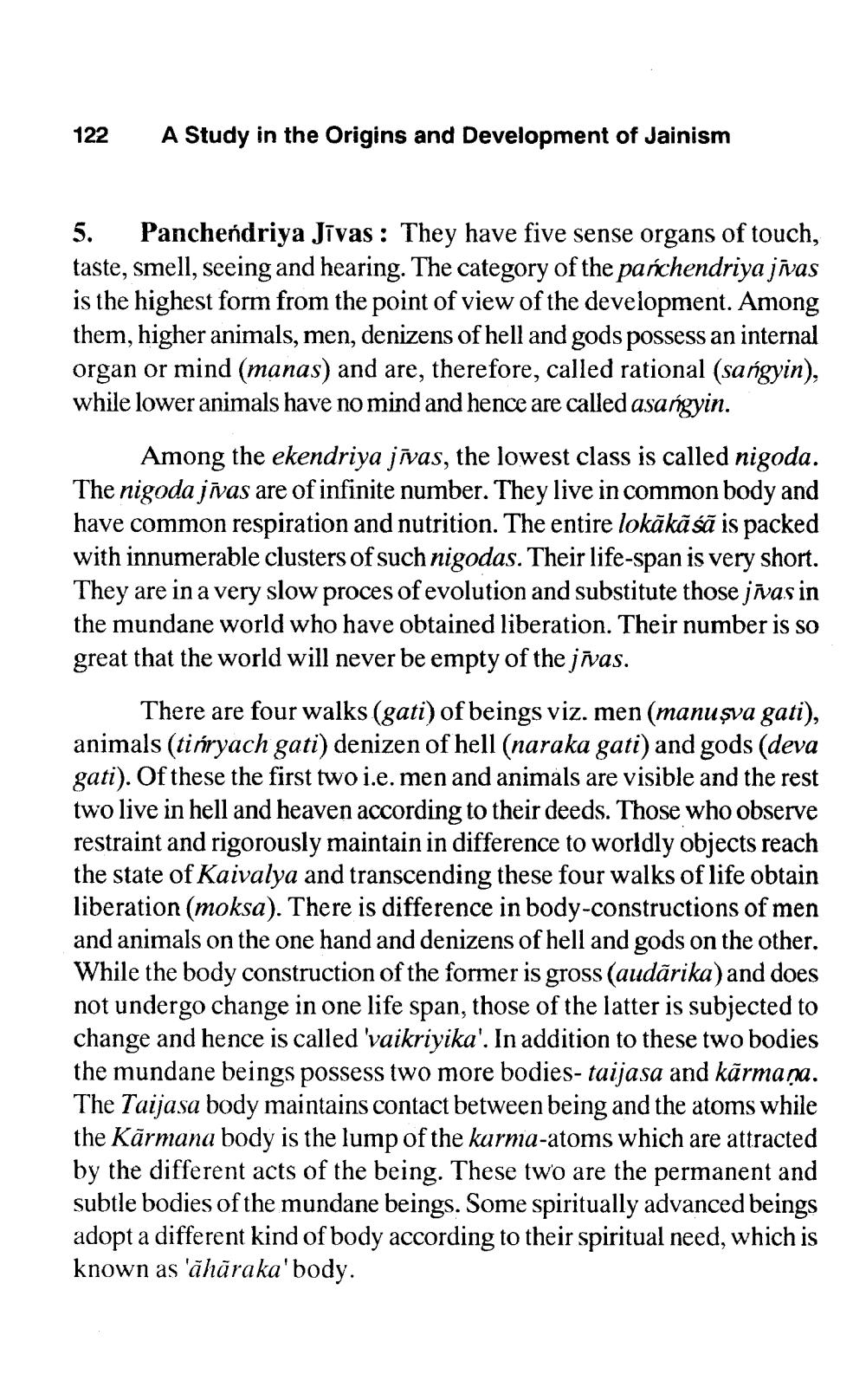________________
122
A Study in the Origins and Development of Jainism
5.
Panchendriya Jīvas: They have five sense organs of touch, taste, smell, seeing and hearing. The category of the pańchendriya jīvas is the highest form from the point of view of the development. Among them, higher animals, men, denizens of hell and gods possess an internal organ or mind (manas) and are, therefore, called rational (sańgyin), while lower animals have no mind and hence are called asańgyin.
Among the ekendriya jīvas, the lowest class is called nigoda. The nigoda jīvas are of infinite number. They live in common body and have common respiration and nutrition. The entire lokākāśā is packed with innumerable clusters of such nigodas. Their life-span is very short. They are in a very slow proces of evolution and substitute those jīvas in the mundane world who have obtained liberation. Their number is so great that the world will never be empty of the jivas.
There are four walks (gati) of beings viz. men (manuṣva gati), animals (tinryach gati) denizen of hell (naraka gati) and gods (deva gati). Of these the first two i.e. men and animals are visible and the rest two live in hell and heaven according to their deeds. Those who observe restraint and rigorously maintain in difference to worldly objects reach the state of Kaivalya and transcending these four walks of life obtain liberation (moksa). There is difference in body-constructions of men and animals on the one hand and denizens of hell and gods on the other. While the body construction of the former is gross (audarika) and does not undergo change in one life span, those of the latter is subjected to change and hence is called 'vaikriyika'. In addition to these two bodies the mundane beings possess two more bodies- taijasa and kārmaṇa. The Taijasa body maintains contact between being and the atoms while the Karmana body is the lump of the karma-atoms which are attracted by the different acts of the being. These two are the permanent and subtle bodies of the mundane beings. Some spiritually advanced beings adopt a different kind of body according to their spiritual need, which is known as 'āhāraka' body.




